- Home
- Michael Byrnes
The Genesis Plague tf-1 Page 6
The Genesis Plague tf-1 Read online
Page 6
She pointed the clicker and the projector brought up a detailed map centred on the Middle East.
‘Surplus foods allow extensive trading over wide areas, while specialization of labour fosters hyper-speed technology. To manage this new way of life, industrious humans develop a systematic means of communication that doesn’t rely on memory or oral transference. They are to become the world’s first bureaucrats. Enter the first written language. Which leads us to the epicentre of it all — right here …’
Brooke used the clicker’s laser pointer to place a bright red dot at the map’s centre, just north of the modern Persian Gulf.
‘Here is where archaeologists have unearthed the ruins of the world’s earliest hierarchical societies. This once lush and peaceful paradise was known as the “land between two rivers”, or “Mesopotamia”. Hard to imagine since today it is a war-torn nation known as Iraq.’
Some quiet chatter rippled through the crowd.
‘Now I’d like to focus on how written language enabled these early civilizations to develop first into agricultural cities with tens of thousands of citizens, then city states hundreds of thousands strong, and eventually … empires stretching across Eurasia.’
Scanning the sea of faces that filled the auditorium, Brooke focused on the intent smiles and nodding heads, blocked out the few sceptical scowls. The recent articles she’d published in the American Journal of Archaeology on the emergence of written language, which not-so-subtly challenged the archaeological establishment, had lured a number of detractors here today. Best to know your enemies, she thought.
‘The earliest known written communication dates to around 3500 BC.’
Brooke hated snubbing the real truth about the ancient writings she’d uncovered in Iraq only a few years ago — the truth that would upend every established theory about the emergence of Mesopotamian culture; the discovery of an ancient language that would push back the timeline by at least five centuries. But she’d signed an airtight confidentiality agreement with that project’s benefactor.
Taking a five-second break to sip some water helped her to fight the compulsion to scream out a pronouncement that would amount to career suicide. Any one of the faces staring back at her from the audience might be linked to that benefactor, she reminded herself. Someone out there is hanging on my every word.
If only she could tell the world how irrefutable evidence showed that around 4000 BC a cataclysm took place in northern Mesopotamia — an event so profound that progress and humankind itself were thrown back in time, forced to start anew. The first Dark Ages.
But instead, she forged on with the story that her esteemed colleagues expected.
‘Around 3500 BC, the Mesopotamian elite began using stamped seals to identify their property. A mark of ownership. Here you have a typical cylinder seal,’ she said, pointing the clicker to advance to the next image — a small stone tube covered in geometric depressions. ‘Cylinders like this would be rolled on to a wet clay slab to leave artful impressions and picture stories. Fast-forward to 3000 BC and we find that scribes then begin pressing into these damp clay tablets with reeds, or stones chips, or other instruments, to create pictographs and hashes representing numbers. Our first accountants and tax collectors.’
The next slide showed an oblong clay tablet delineated into rows of boxes, which were filled with simple representations of animals. The pictographs were beset by vertical lines bisected with numerous cross hashes to resemble overlapping Ts.
‘Here is a fantastic specimen that shows how the oldest Mesopotamian civilization, the Sumerians, tallied food supplies. This mushroom-shaped symbol here represents a cow …’ she indicated it with the laser pointer, ‘… and here we have the head count.’ She moved the dot slightly up and to the left to indicate symbols that looked like sideways Vs. ‘At first, these simple clay tablets were left to dry in the sun. As such, few of the earliest examples remain, since over time moisture and the elements took their toll on the clay — disintegrated the tablets. Eventually, however, the scribes learned that if the finished tablets were baked at a high temperature, the record would be virtually indestructible — permanent. It’s worth noting that this same technological advance was also applied to mud brick so that the ancients could construct grander, more permanent architectural structures.’
For the next few minutes, she elaborated on a series of slides that showed a steady 2,000-year evolution from crude pictographs to schematic wedge-shaped forms called cuneiform — a slow march towards standard word symbols that borrowed and refined the old elements. Next came pictures of various artifacts that chronicled 3,000 years when cuneiform reigned supreme: a clay tablet from 2300 BC Akkad which tallied barley rations; an elaborate cylinder seal whose impressions depicted the Mesopotamian pantheon of gods and goddesses alongside narrative inscriptions; a clay ‘letter’ circa 1350 BC sent by the Babylonian king Burnaburiash to an Egyptian pharaoh; a stela from 860 BC, depicting the Assyrian king, Ashurnasirpal II, in full royal dress, covered in neat rows of cuneiform; an inscribed Babylonian world map from 600 BC; an elaborate clay cylinder excavated from the palace wall of Nebuchadnezzar II.
‘It wasn’t long before writing was used to record legends and mythology. Thousands of years before Adam and Eve appear in the Hebrew book of Genesis, Mesopotamian creation myths — the world’s first true literature — featured a garden paradise, a tree of knowledge and humanity’s first man and woman. Long before Noah’s great flood, a cuneiform epic written in clay around 2700 BC tells the story of the Babylonian hero Gilgamesh, who’d built a boat to escape a cataclysmic flood. The tower of Babel is based on a magnificent temple pyramid in Ur — the ziggurat. And in 2100 BC Abraham leaves Ur to become the Old Testament patriarch, founder of monotheism and progenitor of the twelve tribes of Israel.’
She noticed that the few scowling faces in the audience looked visibly relieved, leading her to conclude that they found her delicate tip-toeing through the material agreeable.
‘From these primitive languages emerge the early Semitic languages: Assyrian, Aramaic, Hebrew. Then come Greek, Latin, the Romance languages and English,’ she said. ‘Not until the Macedonian army led by Alexander the Great conquered Mesopotamia and Persia around 325 BC did cuneiform begin its rapid decline,’ Brooke said. ‘So be sure to visit the gallery and enjoy this most incredible exhibit — a true time capsule of human history written in clay.’
11
In a wide stance with his winter coat folded over a crooked arm, Agent Thomas Flaherty stood stage-left, patiently waiting for the last fans queued along the auditorium’s main aisle to have Professor Thompson autograph a copy of her latest book, Mesopotamia — Empires of Clay. He couldn’t help but smile as he watched the left-handed palaeolinguist grip the pen in a tight hook and press her face close to the page while scrawling personalized messages and a swooping autograph.
Flaherty carefully observed how she interacted with her admirers. A self-proclaimed master of character assessment — partly resultant from his undergrad psychology minor at Boston College — Flaherty decided that her endearing charm seemed genuine. No narcissism here. There was an air of innocence and vulnerability about her too, he decided.
Fifteen minutes later, the final fans dallied out from the auditorium and the professor sat back to flex the fingers on her left hand.
Flaherty moved in, saying, ‘And I thought the Middle East was all about oil.’
Brooke smiled courteously.
‘Really enjoyed your lecture,’ Flaherty said. ‘You know your stuff. And you actually make it interesting. Too bad I didn’t have more professors like you when I was at B-C.’
‘Ah, a fellow alumni. What year did you graduate?’
‘A couple years ahead of you. Ninety-five. Took an extra term, but got it done.’
‘Congratulations.’
‘Thanks. Made the parents proud.’
‘I’m sure you did.’
Sensing by her reserved expression that he wa
s flirting with being pegged as creepy, he reached into his pocket for his credentials and skipped to the formal introduction: ‘Special Agent Thomas Flaherty, Global Security Corp.’ He flashed the ID. ‘I know this isn’t the best time, but I need to ask you some questions about your work in Iraq back in 2003.’
‘Let me see that,’ she said, motioning for his ID.
He gave it to her.
Brooke closely studied the laminated card: the data, the agency’s sleek holographic imprint, the not-so-flattering photo of Agent Flaherty before he’d shaved away an unruly goatee. Then she passed it back to him. ‘Never heard of Global Security Corporation.’
He kept it simple by replying, ‘We work for the Department of Defense.’
‘Sounds very official,’ she said. ‘So what can I do for you?’
‘Actually, this might take a while. Maybe I can buy you a coffee in the cafe downstairs?’
‘All right,’ she said. ‘But tea. Green tea.’
12
IRAQ
Jason used his binoculars to survey the approaching military convoy. With all the dust being kicked up, he wondered why they even bothered painting the vehicles in desert camouflage paint.
The lead vehicle was a six-wheeled, twenty-ton behemoth with a V-hull — a Mine Resistant Ambush Protected armoured transport, or MRAP. Affixed to its front end was a huge mine roller that scraped the ground to pre-detonate any pressure-triggered improvised explosive devices, or IEDs, that might be buried in the roadway. To Jason, the apparatus looked more like a colossal paint roller or something that might be used to flatten asphalt. On the MRAP’s roof, he could make out a telescoping optics mast — infrared, heat sensors, the works. He suspected it had been retrofitted with metal detectors and radio frequency jamming equipment too.
Trailing like ducklings behind the MRAP were five flat-bellied Humvees.
He spied the Blackhawk again. Its side doors were open. Besides the pilot and copilot, he spied six marines inside the fuselage.
A conservative tabulation meant that twenty-five to thirty jar-heads would be arriving in the next five minutes. Marines weren’t always keen on cooperating with contractors. But circumstance dictated that a team effort would be critical to getting into that cave … and fast. Play nice, an inner voice told Jason.
‘Hey, Meat,’ Jason called out.
‘Yo.’
‘Print out those pictures, pronto. I need to send Hazo on a field trip.’
‘I’m on it.’
Hazo came over with a nervous look on his face. ‘Field trip?’
‘You know the locals,’ Jason explained. ‘I want you to take those pictures with you, show them around, figure out what those images on the wall can tell us. And I want you to see if anyone knows this woman whose ID we found melted to that door. No way she was here alone.’
Tentative, Hazo nodded. ‘I understand.’
‘Good. And don’t be long. I’m going to need your help here.’
‘But how will I get to the city?’
‘You’ll fly, of course.’ Jason pointed to the chopper.
While the twenty-eight light infantry troops of the 5th Marine Regiment, 1st Division Expeditionary Force, busily pitched camp, Jason convened with Colonel Bryce Crawford in the makeshift Bedouin command tent. Before he set out to brief the colonel on what had transpired, Jason requested Crawford to loan out his chopper for a critical fact-finding mission. It took some convincing, but Jason was a consummate diplomat. Jason then summoned Hazo inside.
‘Make it fast,’ Crawford warned Hazo. ‘No goofing around out there.’
Jason could tell that the forty-something, no-nonsense Texan — nothing but muscle dressed in crisp fatigues and a soft cap — intimidated Hazo. The Kurd cowered from the colonel’s tough, grey eyes and jutting square cleft chin.
‘Yes Colonel,’ Hazo replied sheepishly. ‘I promise to work quickly.’
‘Then why are you still standing here? Get moving!’ Crawford barked.
Jason watched Hazo scramble out from the tent, down the hill to the chopper.
‘A Kurd?’ Crawford grumbled, shaking his head with severe incredulity. ‘You sure he’s on our side, Sergeant?’
‘Hazo’s been thoroughly vetted. We’d be dead in the water without him.’
‘You guys really do march to a different drummer. If he fucks up, it’s on your head, Yaeger. Not mine. Got it?’
Jason nodded.
Crawford pummelled agitatedly to the Blackhawk pilot that the request had been granted.
They watched as the copilot helped Hazo into the fuselage jumpseat and secure his flight helmet. Then the copilot took his place in the cockpit. The rotors wound up and the chopper lifted into the air, spinning sand in its wash.
The colonel frowned as he scanned the inside of the tent. ‘Christ. How long you been living like this?’
‘Six months, give or take.’
‘Shit, cavemen had it better.’
‘We specialize in dirty work,’ Jason subtly reminded him.
‘Don’t play the martyr, Yaeger,’ he warned. ‘We’re all in the trenches in this shithole.’
Jason let the comment roll.
‘So tell me what we’ve got. I see a lot of blood and meat out there. Any of it ours?’
Jason shook his head. ‘No, sir. Four kills on the hill, eight more on the road. Five more holed up in that cave.’ Then he took a breath and dropped the bomb: ‘And we suspect that Fahim Al-Zahrani is in there with them.’
Crawford’s eyebrows tipped up. ‘Is that right,’ he said with a sardonic grin. ‘You expect me to believe that?’
‘See for yourself,’ Jason said, moving over to Meat’s laptop and bringing up the side-by-side pictures. ‘Took these myself. Ran facial rec on them. Perfect match.’
Crawford sat rigidly in the chair and gave each image a critical, dismantling stare, his sharp chin protruding outward. Finally, he said, ‘Well fuck my mother. This raghead is supposed to be in Afghanistan.’
‘They were trying to move him through the mountains.’
‘Sure they were. Slippery bastards are probably trying to bring him over the border to his buddies in Iran. Shit.’ He exhaled heavily. ‘Heard you called in an air strike. You sure some of that gunk smeared over those rocks isn’t him?’
‘Negative. Called off the strike on his position. I saw Al-Zahrani run into the cave. I’ve got video of that too.’
‘And he’s not buried under all that stone?’
‘Already pushed a Snake through the rubble. All clear on the other side. So far, we’ve seen no blood or bodies. And one of the hostiles managed to smash the camera. We’re pretty sure they’re all still trapped in there.’
Crawford nodded. ‘All right, Yaeger.’ His covetous eyes stayed glued to Al-Zahrani’s digital portrait. ‘I need this fucker alive.’
And there it was, thought Jason — the colonel’s subtle jockeying for claiming the prize as his own.
Then in the reflection of the computer monitor, Jason caught Crawford staring sideways at the cracked-open ID badge casing and its extracted chip which Meat had left beside the laptop. He swore he saw the colonel’s eyes go wide with alarm. It lasted only a fraction of a second.
‘You should know that that’s no ordinary cave up there,’ Jason said.
Crawford stood up, squared his shoulders and crossed his arms tight across his chest. ‘How so?’
Jason told him about the blown-out security door and the strange images carved into the entry tunnel’s wall. For now, he refrained from telling him about the ID badge they’d found — a calculated, risky move.
Crawford took fifteen seconds to mull the facts. Then he said, ‘All right, Yaeger. I get it. So what do you say we go ahead and plunge this toilet?’
13
Thirty kilometres south of the cave, the Blackhawk glided over a lush plain framed by the Goyzha, Azmir, Glazarda and Piramagrun mountains. Hazo peered out the fuselage window to Kurdistan’s economic hub, As Sulay
maniyah. The city was a dense wheel of three- and four-storey buildings, spoked with roadways. He mused how from the air, he could see satellite dishes on practically every rooftop. Kurds loved their television, he thought.
Instead of heading for the international airport a few kilometres to the west, the pilot eased to a hover along Highway 4 and set the chopper down in a vacant parking lot. At the far end of the lot, Hazo spotted the Humvee escort the copilot had arranged while en route. Two severe-looking US marines in desert fatigues and mirrored sunglasses stood in wait, each clutching an M-16.
The pilot killed the turbine and the blades wound down.
The copilot assisted Hazo out from the chopper. As he escorted him to the Humvee, he asked, ‘How long will you be in Suly?’
‘Maybe forty minutes,’ Hazo yelled.
‘We’ll wait here.’ A thumbs-up and the copilot trotted back to the Blackhawk.
Hazo jumped into the Humvee with his two chaperones and provided them with the name of a restaurant located in the city centre, off Sulaymaniyah Circle. Hazo was not surprised that the marines knew its precise location. The restaurant was a hotspot for tourists and US military, thanks in part to its central location and fine Middle Eastern cuisine, but more so for its immaculate bathrooms and chic Arabian decor, which appealed to finicky Americans and Europeans. The marines got chummy when Hazo told them that the jovial proprietor and restaurant’s namesake, Karsaz, was his cousin.
The Humvee zoomed through the busy streets, its massive tyres humming along the potholed pavement. The marines gave Hazo some moist towelettes so he could scrub his grungy face and hands, and blot the blood spatter off his sleeve. He did his best to pat the sand and dirt from his pants.

 The Sacred Bones
The Sacred Bones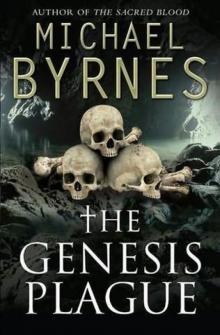 The Genesis Plague (2010)
The Genesis Plague (2010)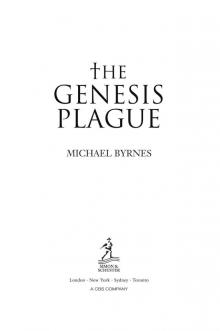 The Genesis Plague
The Genesis Plague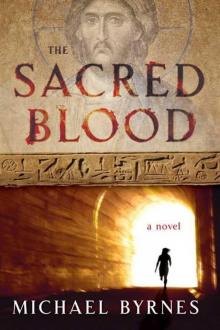 The Sacred Blood
The Sacred Blood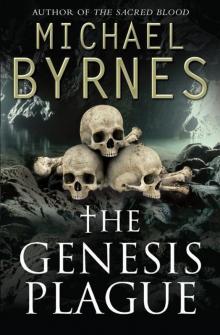 The Genesis Plague tf-1
The Genesis Plague tf-1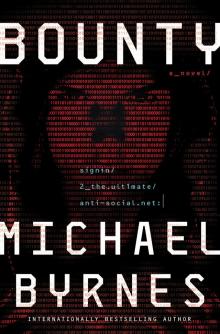 Bounty
Bounty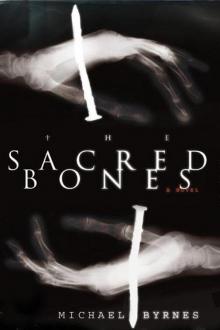 Sacred Bones : A Novel
Sacred Bones : A Novel